Introducing: Hightouch Traits
Any user can now easily create calculated fields called “Traits” to supercharge personalization capabilities - no code needed.
Alec Haase
June 15, 2022
|6 minutes

Today, we’re launching a powerful new capability that enables users of any technical level to easily create and sync customer Traits to various business applications. Traits, which are computed or calculated user attributes can be used in tandem with Hightouch Audiences to supercharge personalization capabilities across marketing channels.
Examples of these computations include:
- Sum ➡️ Sum of price of all purchases a user has made in their lifetime
- Count ➡️ Count of songs listened to in the past 2 weeks
- Most Frequent ➡️ Most Frequent category of articles read
- First ➡️ First page a user visited
- Last ➡️ Last product a user viewed
- Custom SQL ➡️ All Product SKUs a user added to cart before abandoning
Leveraging Traits, organizations are able to unlock the full potential of their customer data - enabling marketers to create hyper-personalized omnichannel experiences in minutes, without having to rely on their data teams.
Breaking Down Data Blockers
With last year’s launch of Hightouch Audiences, we gave users a centralized, no-code audience manager that automatically syncs audiences to various business applications including CRMs like Salesforce or Hubspot, ESPs like Braze or Iterable, and ad platforms like Facebook and Google.
While this was a game-changer for marketers, there was still a gap. To build audiences from calculated fields like LTV or Last Product Viewed, marketing users needed their data team to write complex SQL queries who then stored each individual data point as a new column in a backend customer database. This caused bottlenecks and headaches for marketing and data teams alike.
Now with Traits, business teams can create those same computations right in Hightouch—without the need for SQL. The Traits can then be used in a number of different ways to supercharge marketing campaigns. For example, a single LTV Trait can be created and used to:
- Build Audiences ➡️ Sync a High LTV audience to your ESP
- Enrich Audiences ➡️ Provide each user's individual LTV with the audience sync to your ESP 🤯
The best part of all - because Hightouch is leveraging your single source-of-truth (your data warehouse), you have confidence that your Traits will be accurate and remain consistent across your various tools.
The best way to fully understand the value of Traits is to see the feature in action, so let's use a real world example to explain this further…
Supercharged Marketing Personalization
Imagine that you're a growth marketer at an enterprise e-commerce company. You want to deliver a targeted paid social and email campaign to all users who have purchased in the last 90 days. You quickly create an audience with the following logic and sync it out to Facebook and Braze:
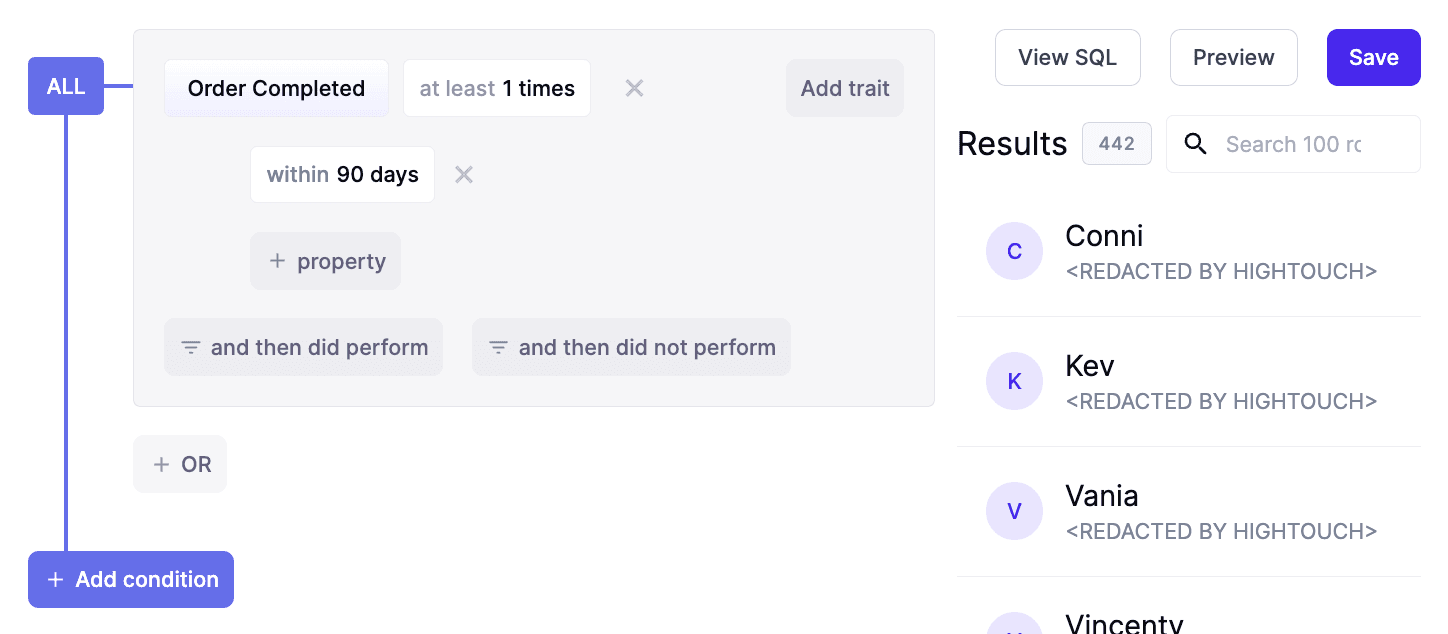
Fast forward a week. While your campaign was a success and drove a large number of purchases, you really need to decrease your CAC (customer acquisition costs). You know that you can do this on your next campaign by limiting targeting to your highest LTV (lifetime value) customers, but your data team can’t get around to making a user LTV field available until next month…
Creating a Trait
Thanks to Hightouch Traits, creating this LTV field is simple. Just create a Trait that takes the SUM of the Price field on all Order Completed events. Hightouch will then compute this LTV field as a Trait and keep it updated in the future.

Building an Audience with Traits
Leveraging this new LTV Trait, you can enhance the segmentation on your original audience to ensure that you are only targeting your highest value users - like those who have an LTV greater than $100.
Now with a customer LTV field to segment on, you use the logic below and launch your High-LTV campaign.
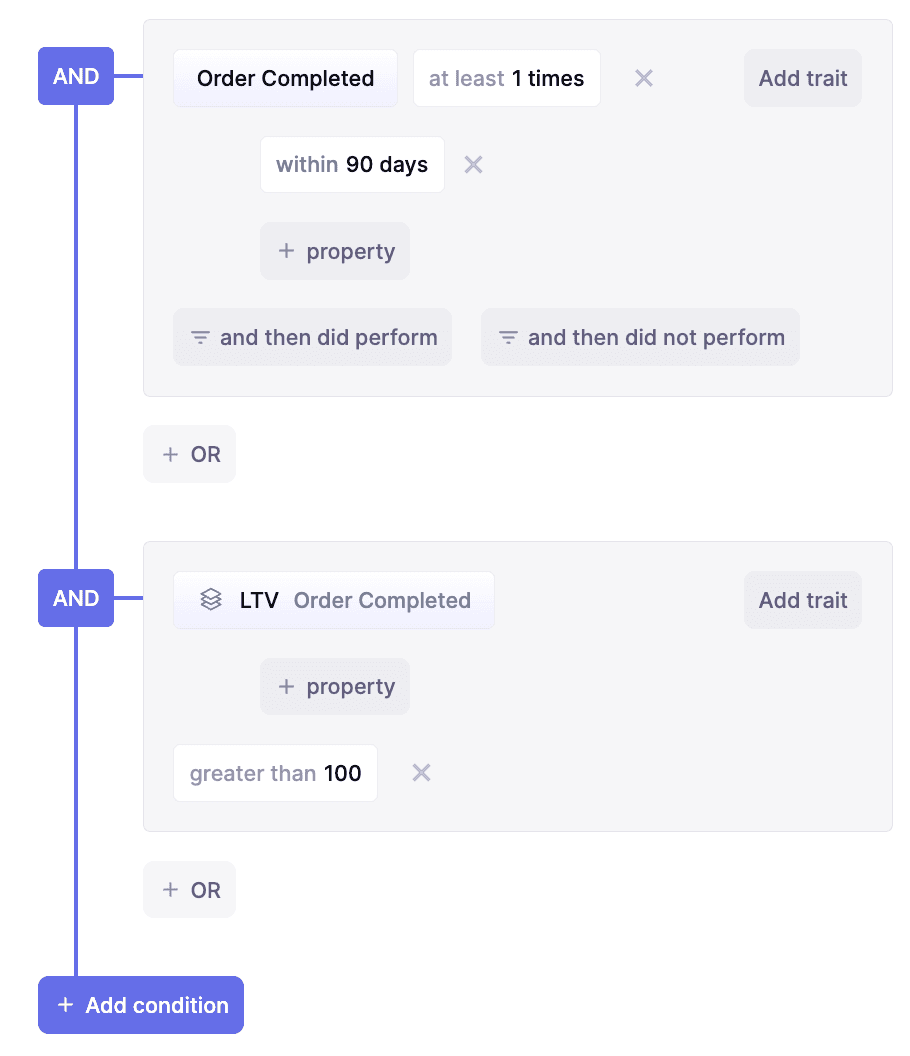
Your new campaign was a smashing success—not only did you increase your sales, but CAC dropped by 20%!
You want to celebrate, but your company’s annual sale is on the horizon. For the sale, you want to capitalize on the new influx of customers by sending an email campaign that includes category-specific promo codes. Your ops team is concerned about sharing your best promo codes to too many customers though, so they’ve asked you to only send out the highest discounts if a customer's category-specific LTV is above $50.
Trait Enrichments
For Braze to be able to provide this dynamic personalization, you will first need to compute LTV for each specific product category.
You navigate to Trait Enrichments where you are able to further segment existing traits to compute even more granular data points. In this case, you make a Trait called LTV - Running that is going to calculate the LTV from purchases made specifically in the Running category - as seen below:
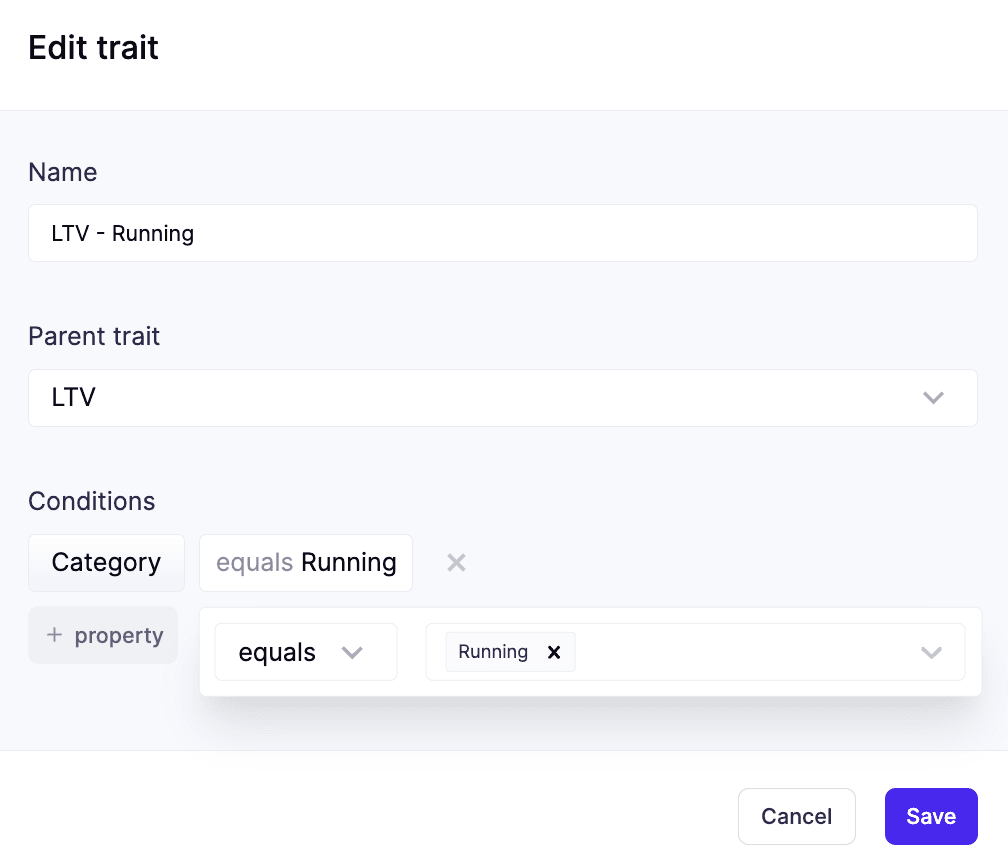
Once created, these more granular Trait Enrichments are then added onto your audience sync allowing each LTV field to pass down to your email platform. Doing so ensures that your email templates can reference a user’s LTV by product category to determine when to show the best promo codes.
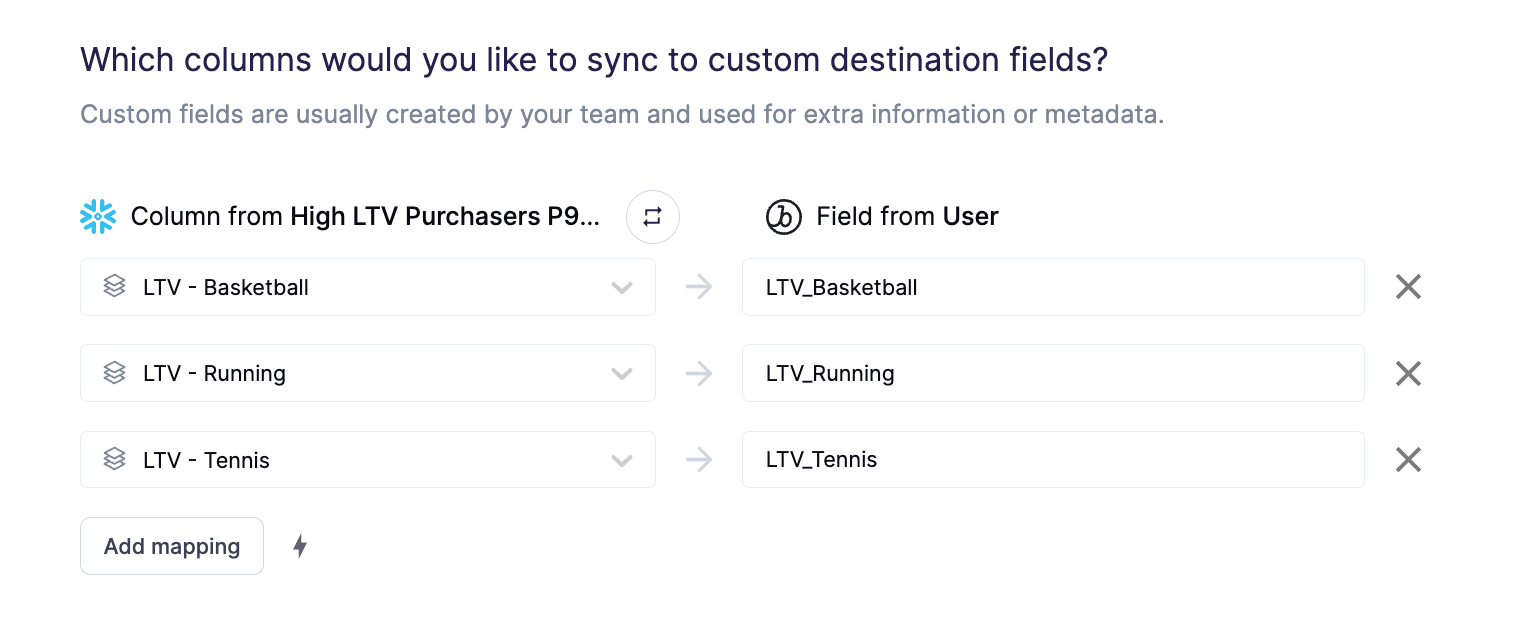
Although you’re confident in the upcoming promo email, you know that historically, your company has struggled with cart conversion metrics. You decide to additionally set up a cart abandon campaign to re-target users who add to their cart but do not purchase. Again, setting up the audience is made easy with Hightouch.
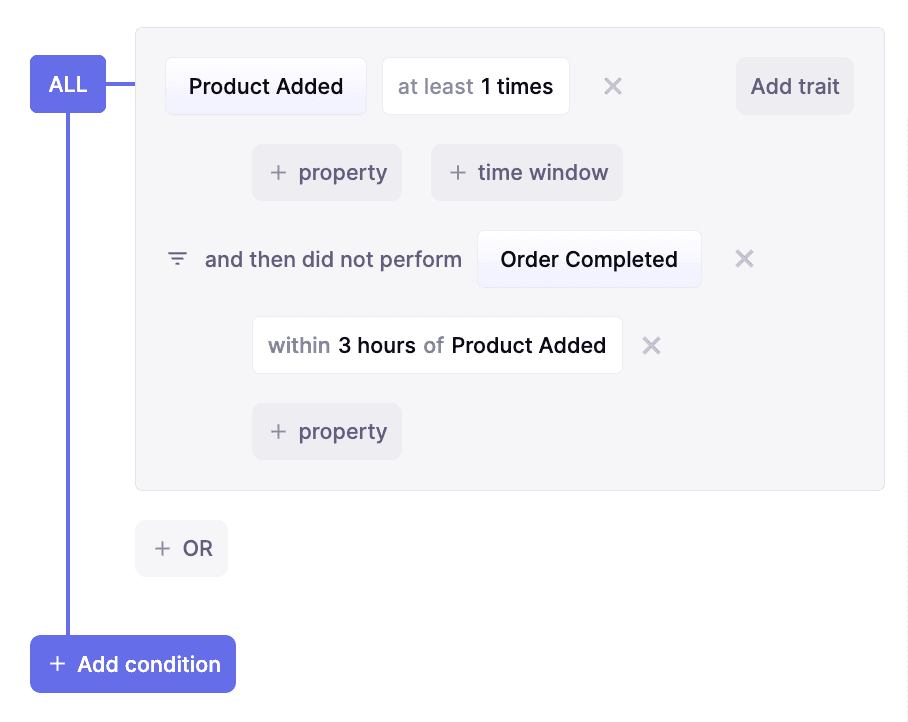
While your audience is ready to go, you want to take this abandoner campaign one step further by personalizing the emails with the specific product that the customer abandoned. What used to take hours of development and multiple teams to coordinate, can now be handled in under a minute with Event Traits.
Event Traits
To create an Event Trait, you click add trait directly within your abandoner audience. Using the logic below, your new Event Trait then pulls in the specific ID of the abandoned product (yes, the exact one that caused this audience to trigger):
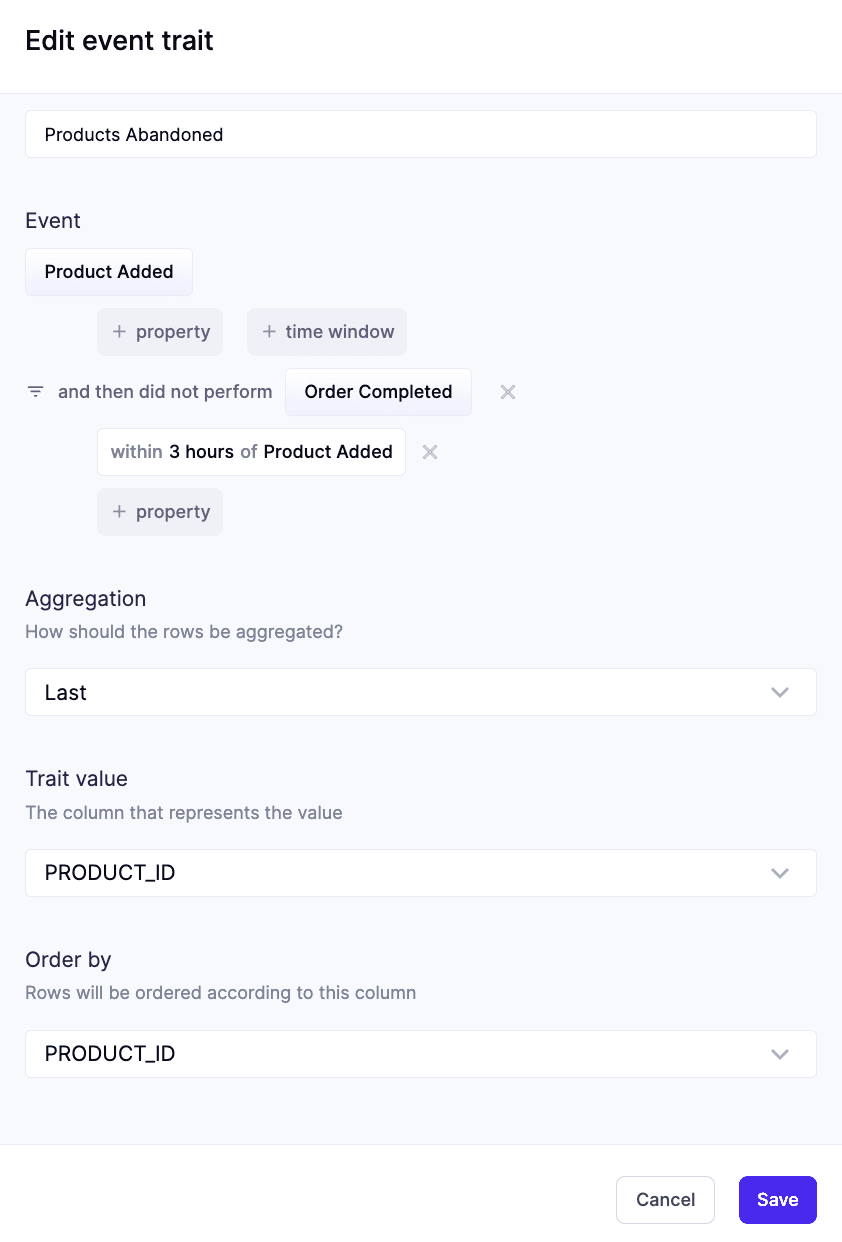
By sending this Last Product ID Abandoned Trait down to your email platform, you can reference it in your email templates and ensure that users receive a hyper-personalized cart abandon campaign that makes it almost too easy to convert.
Talk about impressing your team. It sounds like it's time for a promotion!

Getting Started
Getting started with Traits is easy. If you’re not a Hightouch customer yet, you can sign up for a free account. Once you have an account, simply request access to Hightouch Audiences. For more information, you can check out our Traits docs here.










